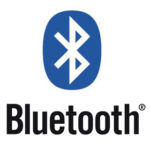Bluetooth 5.0 is the latest version of the wireless communication technology and it’s got some exciting new features. We haven’t seen this big of an improvement on the technology since version 4.2 released in 2015. The PAN (personal area network) communication technique still operates on the 2.4 GHz to 2.483-GHz spectrum, but uses 40 2-MHz-wide channels rather than the 79 1-MHz channels of classic Bluetooth. This essentially gives us lower power consumption and greater interference mitigation. That’s good news for those of us that use wireless headphones or speakers and plan our days around battery consumption. Bluetooth 5.0 will also give us the option of pairing multiple devices together at the same time. The biggest advantage to this is having multiple pairs of headphones connected to the same phone or audio device. Sorry, playing content in separate rooms like a Sonos system won’t be possible. This is still a peer-to-peer network and it’s just not built for that. Even with all the great eco-friendly feature introduced in the new standard I’m primarily excited about 2 things, speed and range.
The technology now supports speeds up to 2 Mbps which is nearly twice as fast as its predecessor. For audio enthusiasts this means high bit-rate audio at lossless quality. We are sure to see great improvements is in the home theater sector where we can now feed high fidelity audio out our wireless entertainment systems.  Home theater component and 7.1 surround systems have been lacking for years due to having to sacrifice quality for the ease of wireless transmission. This is still not fast enough to comfortably support live performance or studio applications such as in-ear monitors or audio hardware where engineers rely on zero latency. However, quality wireless transmission of multi channel audio with zero latency is not too far away. Obviously this is great if you rely on Bluetooth solely for data transferring. Sending wirelessly between computers or from your camera to laptop can now be accomplished in half the time.
Home theater component and 7.1 surround systems have been lacking for years due to having to sacrifice quality for the ease of wireless transmission. This is still not fast enough to comfortably support live performance or studio applications such as in-ear monitors or audio hardware where engineers rely on zero latency. However, quality wireless transmission of multi channel audio with zero latency is not too far away. Obviously this is great if you rely on Bluetooth solely for data transferring. Sending wirelessly between computers or from your camera to laptop can now be accomplished in half the time.
Bluetooth 5.0 also supports nearly 4 times the transmission distance bringing in a whopping 260 feet of wireless communication (line of sight with no interference of course). That’s a huge improvement over the 30 feet maximum we get out of Bluetooth version 4.2. This will be good for headphones and outdoor spaces where you can have your speakers a long distance away from your source player or phone. We’ll also start to see small conference rooms, classrooms, and whole house audio systems operating on the personal area network platform. In the engineer world we will start to see controller devices such as phones and tablets start utilizing audio control systems and mixers over Bluetooth rather than traditional WIFI.
We’re really truly at the mercy of the manufactures here to see what they can make of this newest technology and how it will relate in the live performance and studio environments. Smart home and IoT devices such as light bulbs and thermostats are sure to switch over to Bluetooth which will help clean up the over crowded WIFI spectrum. However, I’m skeptical that the audio industry will truly utilize the benefits of Bluetooth 5.0 to improve on hi-fidelity transmission. It appears this standard is really focused at the IoT industry and the consumer headphone market where audio quality doesn’t even exist. This new standard is all about transmitting data faster at lower power with greater connectivity. The Special Interest Group that founded Bluetooth didn’t even mention anything about audio quality when they announced the new standards late last year. Music and audio lovers will still reap benefits from the technology advances in the newest version.
Although the standard is already in place, it will likely take several years for the industry to fully implement the latest version to your favorite headphones, cameras, and computers. We can expect to see almost all devices using version 5.0 as a standard by year 2020. One thing that’s for sure is our wireless atmosphere is about to become busier than ever.
